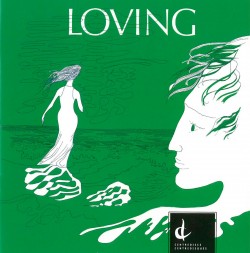 R. Murray Schafer – Loving
R. Murray Schafer – Loving
Fallis; Gudgeon; MacPhail; Terrell; MacLeod; Savard; New Music Concerts; Robert Aitken
Centrediscs CMCCD 22516
R. Murray Schafer’s 70-minute bilingual “synaesthetic” chamber work Loving (Toi) was written between 1963 and 1965 (the same year he wrote the pivotal book, The Composer in the Classroom) and was first performed on the Radio Canada television program L’Heure du Concert in 1966. A few months later it was rebroadcast on the CBC English network. Over 13 years, L’Heure du Concert (produced by Pierre Mercure) brought a spectacular 133 operas and 133 ballets to CBC national television audiences. Mercure’s production of Loving (Toi) was his last, leaving several elements unfinished at the time of his sudden death at age 39. Fortunately, the Canadian Music Centre’s Centrediscs label recently reissued the excellent 1978 New Music Concerts recording of the first complete production that was originally released on the Melbourne Records label. It was conducted by Robert Aitken and features strong performances by the entire group, including singers Mary Lou Fallis, Susan Gudgeon, Jean MacPhail, Katherine Terrell and Trulie MacLeod, actor Gilles Savard, members of the Purcell String Quartet and Nexus, among others.
Loving (Toi) is Schafer’s first work for the stage (the 1978 NMC performance which toured four cities was semi-staged), predating the Patria series, his string quartets, and other works he is most known for. Clues that point to Schafer’s subsequent eclectic blending of multicultural mythological characters are abundant here, with Ishtar, the Mesopotamian goddess of fertility, love, war and sex, cohabiting the work with the Greek god of love, Eros, in what Schafer calls a “confrontation between the male and female psyches.” Interspersed are the qualities and attitudes of Modesty, Vanity, The Poet, The Man and The Woman, each given supporting colouration within the ensemble (Modesty as strings plus accordion, Vanity as plucked instruments, Ishtar with percussion and Eros using bells).
Schafer’s writing is broadly expressive, a free-flowing synthesis of the avant-garde mannerisms of the epoch, warmly recorded spoken text, simple yet effective electroacoustic episodes, florid harp writing and long vocal lines that sometimes foreshadow the neo-Romanticism that dominates his later work. While Schafer describes Loving (Toi)as ambiguous and exploring the depths of the unconscious, his consideration of human sexuality now seems dated in its binary focus on masculine and feminine. Fifty years later, however, the piece retains the sense of sonic inventiveness and integrated plurality that is synonymous with his best work.



